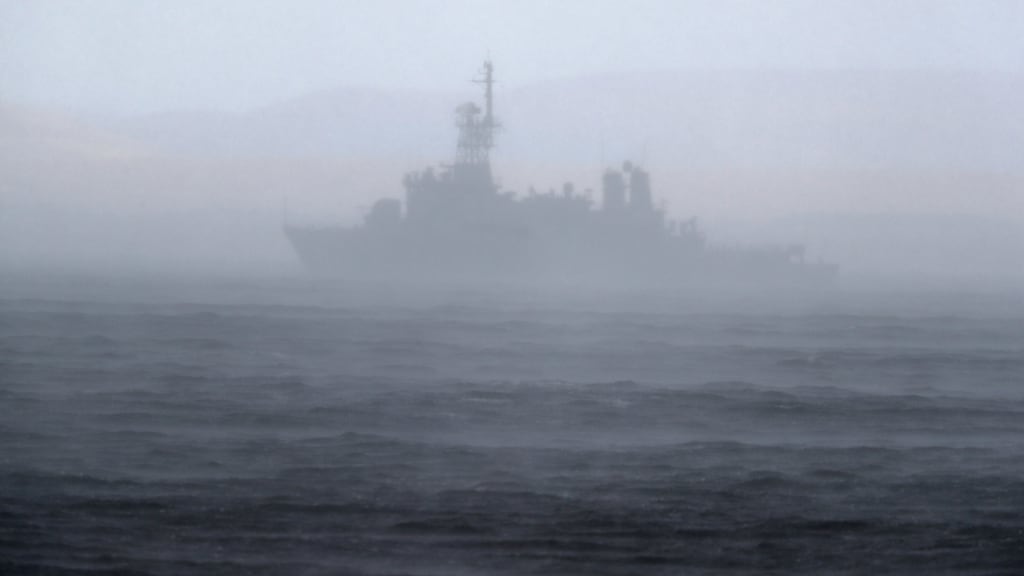The discovery of wreckage from the tail of the Irish Coast Guard R116 helicopter near the summit of Blackrock island off Mayo creates even more perplexing questions for air crash investigators than it answers.
The crew of the Sikorsky S-92 are reported to have stated in a radio transmission shortly before contact was lost that they were landing at Blacksod to refuel while in fact they were close to Blackrock at the time, some 17km to the west. There are no refuelling facilities on the 100m high Blackrock.
Two broad possibilities can be considered for this apparent anomaly. The crew may have confused Blackrock for the similar sounding Blacksod and selected it as their destination on the aircraft’s computerised navigation system (or the co-ordinates for Blackrock may have been entered in error for Blacksod).
A second, and equally viable possibility, was that Blackrock may have been deliberately chosen by the crew as an easily identifiable waypoint to which they could conveniently fly while setting their aircraft up for a safe approach on an easterly track back to Blacksod.
Part of this would involve preparing to fly at a lower altitude for the final approach to Blacksod and, given the low cloud base at the time, they may have preferred to lose altitude above the sea. By doing this they would have been less likely to encounter any unexpected land-based obstructions such as hills or tall man-made structures.
There would be no need to approach close to Blackrock unless they needed to land on the helipad close to the lighthouse. In the event, they flew to the west past Blackrock and then turned back towards it.
Contact was lost
The final trace of R116 on the Automatic Identification System (AIS) tracking network shows the helicopter very close to the island, near where the lighthouse and helipad are located, and apparently heading towards it at a speed of 9 knots (about 17km/h). Shortly afterwards all contact was lost.
A tempting inference that can be drawn from this, and which might support the theory that they were mistaking Blackrock for Blacksod, is they were planning to land on Blackrock and were heading towards the helipad.
The fact some wreckage from the tail was found near the lighthouse supports the theory the helicopter continued heading in that direction.
The main wreckage of the helicopter is underwater, hundreds of metres away from where the tail parts were found. Accident investigators say they have not yet found any marks suggesting an impact between the helicopter and the island or its buildings. So how did the main wreckage and the tail parts come to be so far apart?
There are two possibilities. One is that, while manoeuvering to land, or having aborted a landing, the tail struck something on the island and parts broke off.
Were such contact to have disabled the rear rotor the main part of the helicopter would become unmanageable and spin through 360 degrees every few seconds. It could have flown several hundred metres in this condition before coming down in the sea where it might have drifted further before sinking.
Emergency landing
Another possibility is that some serious mechanical problem occurred and the crew were attempting an urgent emergency landing on Blackrock, so urgent that they had no time to voice their intentions or declare a Mayday by radio.
One possibility is the failure of a tail rotor bearing leading to a similar loss of control. This bearing has failed three times before on this type of helicopter, and led to the issuing of an almost unprecedented second Emergency Airworthiness Directive in January by the US Federal Aviation Administration.
After the first two occurrences the FAA had called for the emergency inspection of bearings which had more than 80 hours of flight service. In the second bulletin it said they should be inspected after just five hours in service, and every 10 hours thereafter, which is almost daily for busy helicopters.
In December, the crew of a similar Sikorsky S-92A lost control attempting to land on a North Sea oil rig and their machine spun through 180 degrees in just one second before they were able to touch down. That incident was attributed to the same rotor bearing failing, and led to the FAA’s January alarm.










